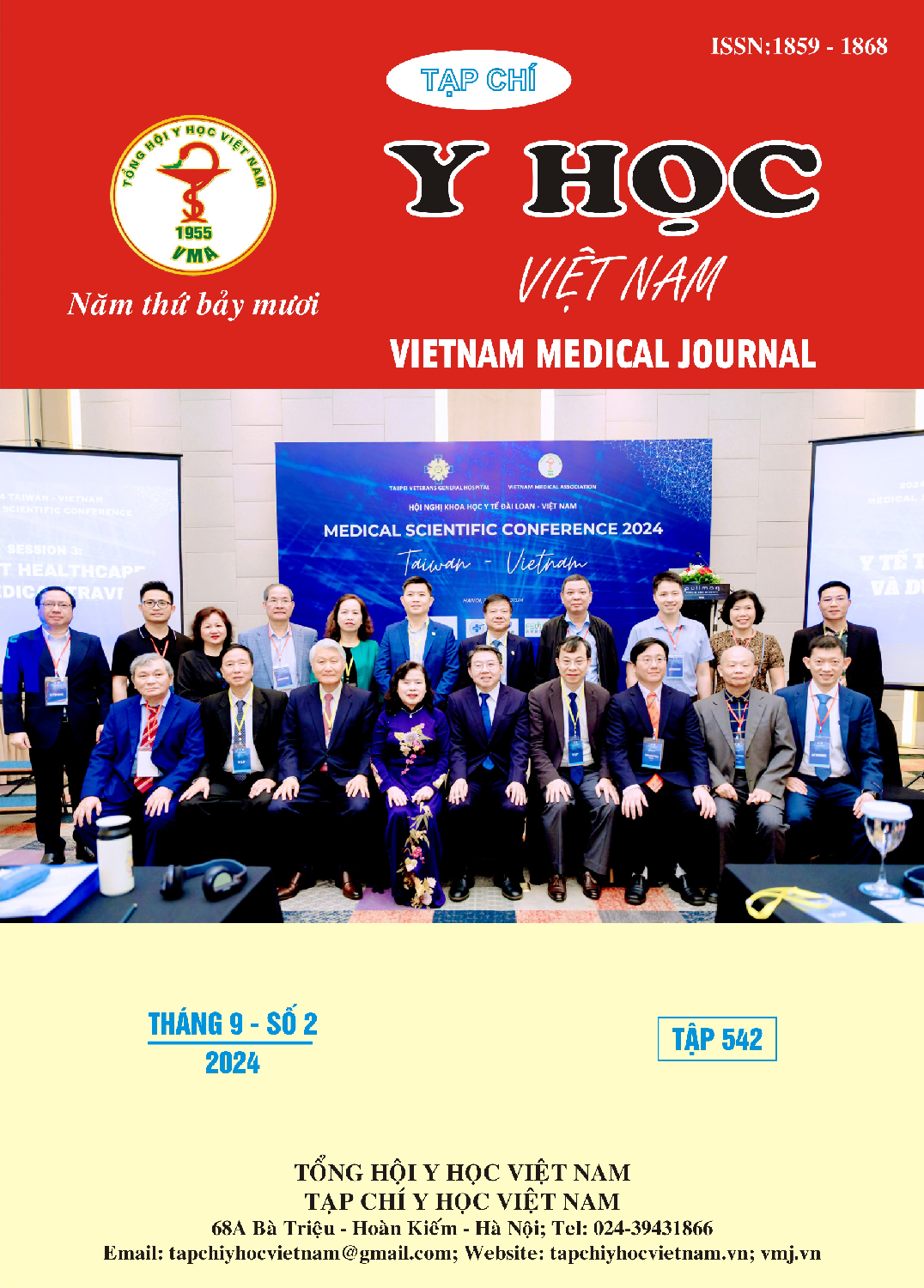RISK FACTORS AND RESULTS OF MECHANICAL VENTILATION-ASSOCIATED PNEUMONIA IN SEVERE BURN PATIENTS
Main Article Content
Abstract
Objectives: Determine risk factors and results of ventilator-associated pneumonia in severe burn patients. Subjects and methods: Prospective study was conducted on 124 severe burn patients with invasive ventilation, treated in the ICU at the Le Huu Trac National burns Hospital from 1/2021 to 12/ 2023. Ventilator-associated pneumonia was diagnosed according to the International Burn Association 2018. Patients were divided into 2 groups, with or without ventilator-associated pneumonia. The criteria were compared between the 2 groups. Results: In the group of burn patients with ventilator-associated pneumonia, the prognostic indicators of burn patients such as burn area, deep burn area, burn index, and inhalation injury were all higher than the group without ventilator-associated pneumonia (p<0.001). Regarding burn location, only patients with back burns had a higher incidence of ventilator-related pneumonia than the group without (p<0.05). Multivariate analysis showed that inhalation injury were independent risk factor for ventilator-associated pneumonia. The mortality rate in burn patients with ventilator-associated pneumonia is 73.24%. Conclusion: Ventilator-associated pneumonia is a complication with a high mortality rate in severe burn patients. Inhalation injury were independent risk factor for ventilator-associated pneumonia in severe burned patients.
Article Details
Keywords
ventilator-associated pneumonia, burns
References
2. Advisory S., Steering S., Committee I. P. G. (2018) ISBI Practice Guidelines for Burn Care, Part 2. Burns: journal of the International Society for Burn Injuries, 44 (7), 1617.
3. Advisory S., Steering S., Committee I. P. G. (2018) ISBI Practice Guidelines for Burn Care, Part 2. Burns: journal of the International Society for Burn Injuries, 44 (7), 1617.
4. Bonten MJ, Kollef MH, Hall JB. (2004) Risk factors for ventilator‐associated pneumonia: from epidemiology to patient management. Clin Infect Dis. 38(8):1141‐9.
5. Miguel A., Cerdaé E., Garciéa-Hierro P.et al. (2001) Pneumonia in Patients With Severe Burns: A Classification According to the Concept of the Carrier State. Chest, 119 (4), 1160-1165.
6. Tanizaki S., Suzuki K. (2012) No influence of burn size on ventilator-associated pneumonia in burn patients with inhalation injury. Burns, 38 (8), 1109-1113.
7. Brusselaers N, Logie D, Vogelaers D, at al (2012). Burns, inhalation injury and ventilator‐associated pneumonia: Value of routine surveillance cultures. Burns. 38(3):364‐370.
8. Tejerina E., Frutos-Vivar F., Restrepo M. I. et al. (2006) Incidence, risk factors, and outcome of ventilator-associated pneumonia. Journal of critical care, 21 (1), 56-65.


